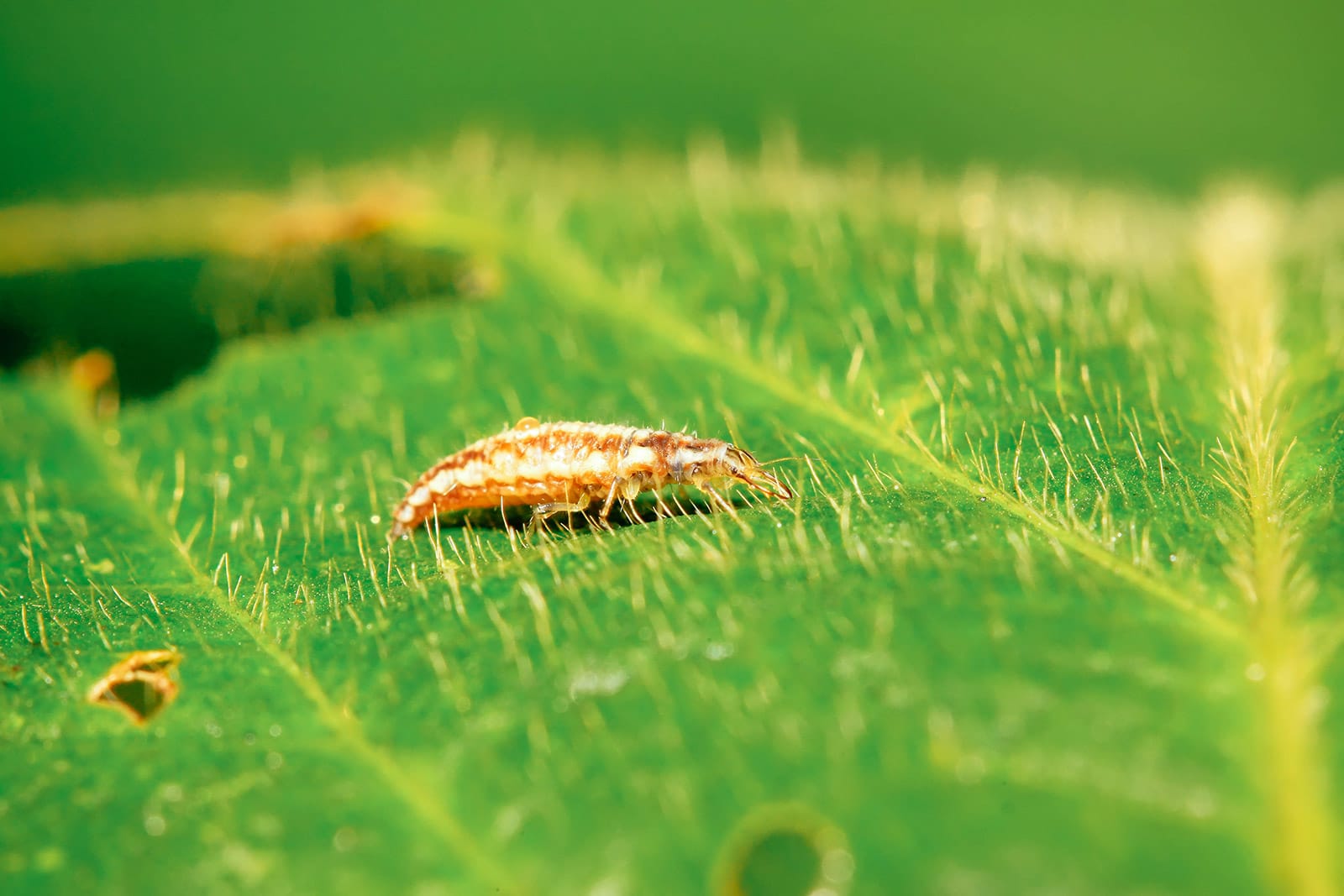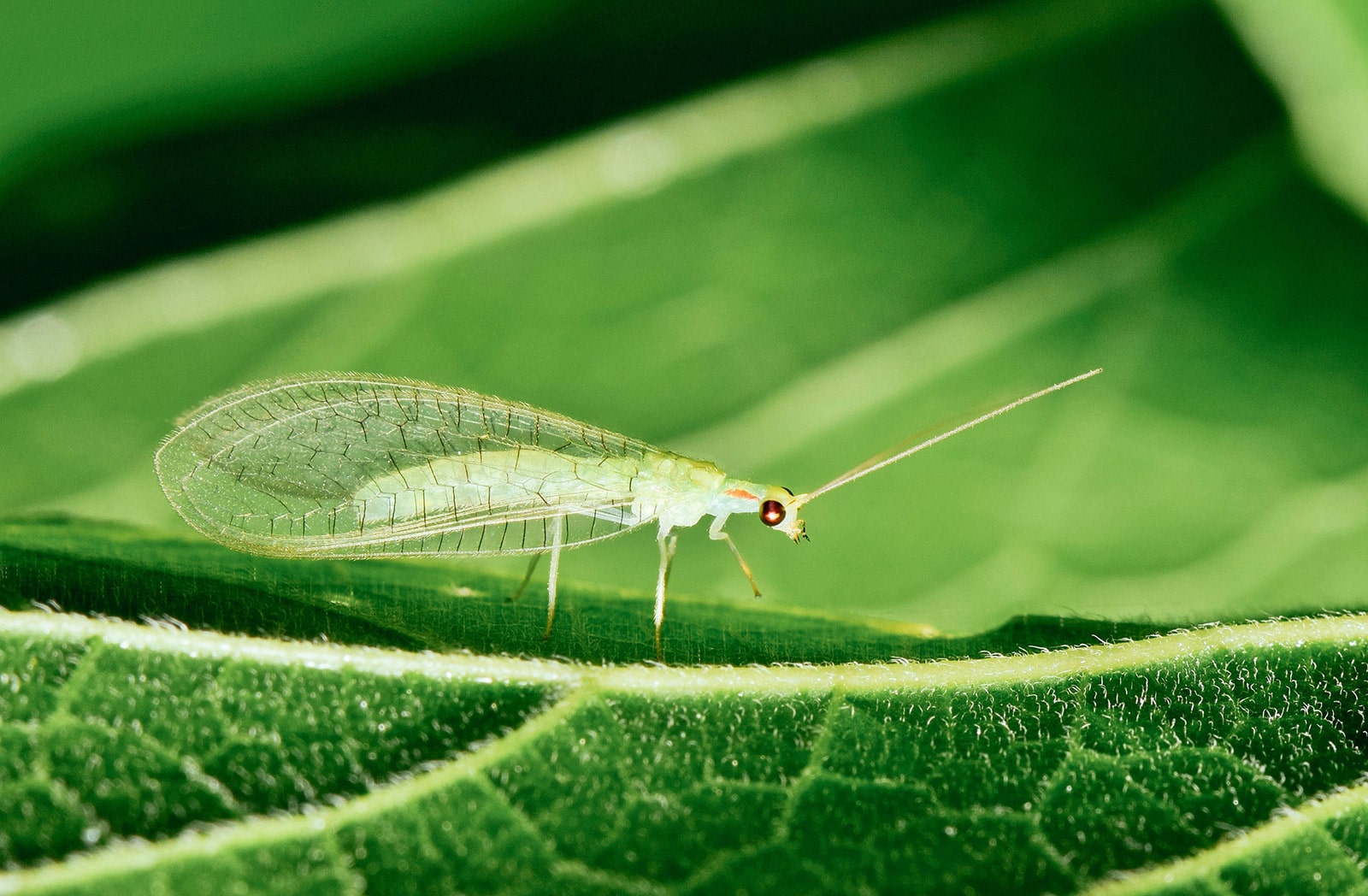If you find yourself constantly battling aphids, mites, thrips, mealybugs, and other insect pests, don’t reach for the pesticide just yet.
Build up your army of good bugs and let them do the work for you!
Beneficial insects like ladybugs, lacewings, and hoverflies are powerful allies to have in the garden, and keeping them around is key to a healthy and biodiverse landscape.
But it isn’t the adult bugs that you need to target. Adult ladybugs, lacewings, and hoverflies actually feed on nectar and pollen.
Their hungry offspring, however, can’t get enough of small pests—they’re the ones who feast voraciously like teenagers while they’re in the larval stage.

That means the goal of any good ecosystem is having a wide range of beneficial flowers for adult insects to land on, lay their eggs, and introduce the real army of larvae that you want.
But if your pollinator garden has yet to bloom, how can you attract these beneficial bugs quickly and easily, and make sure they stick around long enough to prey on pests?
By giving them a free meal!
You can offer a natural homemade food source placed strategically around your plants (especially plants that are overrun by pests). This will help draw good bugs to the garden and encourage them to stay a while. All you need are a few simple household ingredients to get started.

Homemade Wheast
Wheast, a combination of whey and yeast, is the standard feed used by commercial insectaries. It’s basically ladybug and lacewing food.
In a home garden, it works as a food supplement for beneficial insects you introduce, and it also helps attract more insects. This version is similar to what you can buy in garden centers, minus the whey.
- 1/4 cup white sugar
- 1/4 cup brewer’s yeast
In a small bowl, combine the sugar and yeast with a small spoonful of water at a time, mixing until it becomes the consistency of a paste.
Spread the paste onto small wooden stakes or popsicle sticks, and insert them in the soil around your plants. (This works especially well if you release ladybugs in the garden.)
Sugar Water Spray (Ladybug Food)
If you release ladybugs in your garden, spray this mixture on your plants to feed them right away so they linger a little longer.
- 1 quart water
- 10 tablespoons white sugar
In a glass or plastic container, stir the sugar in water until it’s dissolved.
Pour the solution into a spray bottle and spray it on plants that are heavily infested with aphids. (Make sure you release ladybugs at the base of those plants—they’ll crawl up to find their food.)
Beneficial Bug Food
This recipe uses a little honey to attract the good bugs. It will store in the fridge for up to 10 days in a covered container, so be sure to make a new batch if you don’t use it all up.
- 2/3 cup warm water
- 1/2 cup sugar
- 1/4 cup brewer’s yeast
- 2 teaspoons honey
Combine all of the ingredients in a glass or plastic container.
To use it, dilute 2 tablespoons of the mixture in 1 quart of warm water until well blended. Pour the solution in a spray bottle and spray on your plants from spring to early summer (as long as temperatures stay under 80°F).
More helpful posts about pollinators:
- How to Attract Ladybugs to Your Garden (and Why You Want To)
- Simply Perfect Hummingbird Food Recipe: Why You Should Always Make Your Own
- Foolproof Five: The Best Plants to Grow for Bees
- Easy Bee Identification: A Visual Guide to 16 Types of Bees In Your Backyard
- Easy Wasp Identification: A Visual Guide to 19 Common Types of Wasps
















Hello,
I’m new on this subject .
What is it with Whey, what is it, why have you not included it in formulations ?
I would like to culture some garden predators, mites and ladybirds.
Best wishes and thanks in advance
Art Russell
I am in south east UK btw
My recipes don’t use whey as the brewer’s yeast and sugar are effective enough to attract ladybugs and other insects.
I had so much trouble with ant hills in my garden, wouldn’t white sugar invite them back?
If you have an ant problem, then it’s best to attract beneficial insects by growing a variety of nectar-rich flowers that bloom at different times.
Instead of brewer’s yeast, can I use regular yeast (the kind used for making bread) in these recipes? It would be a great way to used up expired yeast packets.
Instead of brewer’s yeast, can I use regular yeast (the kind used for making bread) in these recipes? It would be a great way to use up yeast that is past its expiration date. Thank you for all the wonderful and practical information you provide to your readers.
Do you have a recipe for wheast that includes whey? I have some leftover from making cheese 😉